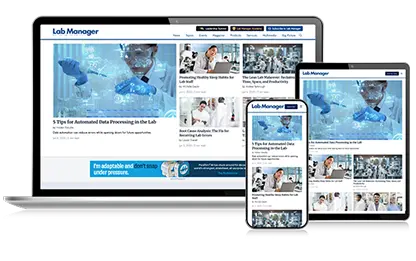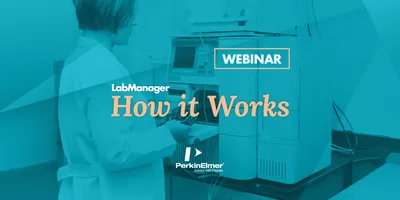The computer algorithm that led to the Google search engine and a multi-billion-dollar business was developed by Larry Page and Sergey Brin while they were working as graduate students under part of a $4.5 million National Science Foundation grant for a digital library project at Stanford University.
The Human Genome Project, funded by the federal government at a cost of $5.6 billion (in 2010 dollars) over 13 years, has had a fundamental impact on areas as diverse as human health, agriculture, forensics, and veterinary medicine, with an economic payoff in 2010 alone of $67 billion, according to a study by the Battelle Memorial Institute.
The iPod, one of Apple’s signature products when it was introduced in 2001, depended on several technologies that grew out of federally funded basic research, including lithium-ion batteries, liquid crystal displays, signal compression, and magnetic storage drives.
Such examples help demonstrate the value of federal research and development spending for economic growth and prosperity, an expert panel said during a 16 March discussion sponsored by the American Association for the Advancement of Science (AAAS) and nine other professional societies.
The discussion on the value of federal R&D, in two identical briefings on the House and Senate sides of Capitol Hill, was organized by AAAS and the University Corporation for Atmospheric Research (UCAR) with sponsorship also by the American Chemical Society, American Geosciences Institute, American Geophysical Union, American Institute of Biological Sciences, ASME (American Society of Mechanical Engineers), American Sociological Association, American Statistical Association, and The Geological Society of America.
The briefings, moderated by Vijay Vaitheeswaran, a senior correspondent for The Economist, grappled with the changing landscape for innovation and some of the challenges facing the United States as R&D budgets shrink and competition from abroad increases. While the panelists agreed it is difficult to come up with clear-cut quantitative measures of the impact of federal R&D, they said there is little question that such spending has paid off over the years.
Fred Block, research professor of sociology at the University of California, Davis, said federal R&D spending has become even more important as large companies have scaled back their investment in basic research. Publicly funded research laboratories, universities, and small start-up companies—often with the help of federal funds—have now become engines of American innovation.
“The basic innovation system in the U.S. economy has changed very radically over the last 30 years,” Block said. The dominance of in-house laboratories at large companies has waned. Many scientists and engineers have “voted with their feet,” he said, and have moved to companies with fewer than 500 employees. Block cited a study of the winners of the “R&D 100” awards that are given out annually by R&D Magazine. In 1975, 47 of the awards were won by Fortune 500 companies, either alone or working in combination. By 2006, that number was just six.
Among the 88 U.S. winners of the R&D awards in 2006, Block said, 77 had federal R&D funding. “The federal role has permeated the innovation economy.”
Block said the long-term value of R&D, both public and private, is evident in a 2010 study that tracked the growth of output per unit of labor in the U.S. economy from 1948 to 2007. Using data from the U.S. Bureau of Labor Statistics, the study found that the output grew at an annual rate of 2.5%, and 58% of that growth was attributed to the increase of knowledge that comes from investment in R&D.
“We have very powerful evidence of the productivity” of R&D spending, Block said, but federal outlays as a percentage of the gross domestic product have been declining. “When we’re cutting back on that R&D spending, we are eating our seed corn,” Block said, and “upsetting the possibilities of future economic growth and development.”
Catherine T. (Katie) Hunt, R&D director for Innovation Sourcing & Sustainable Technologies at The Dow Chemical Company, said it is important not only to avoid eating the “seed corn” for economic growth, but also to make sure the ground is well-prepared when that corn is planted. Federal R&D programs, which often cross disciplinary boundaries, she said, help to promote new ideas by bringing together disparate pieces of a research puzzle.
An open, networked, collaborative approach to the pursuit of innovative ideas is harder to measure than a simple “dollar in, dollar out” model, Vaitheeswaran noted. But that approach is becoming standard. “Technologies are converging in unexpected ways,” he said, such as the possible role of synthetic biology in the construction of novel organisms for producing clean fuels. And although he described himself as an unabashed enthusiast of the free market, Vaitheeswaran said the federal government, through its R&D spending, is playing an essential role in the new “innovation ecosystem.”
Hunt described her company’s continuing commitment to R&D. Dow has 300 primary projects and spends more than $1.65 billion per year on R&D, Hunt said. “It’s important to invest in R&D,” she said. “That’s how you build your innovation pipeline.”
Hunt mentioned several Dow projects that have benefited from federal R&D investment, including the commercially available Powerhouse Solar Shingles that were developed with the help of Department of Energy funding; lithium-ion cell technology for electric and hybrid vehicles; military and stationary storage applications (being developed by Dow Kokam, a joint venture of Dow, TK Advanced Battery, and Groupe Dassault); and a collaboration with the Department of Energy’s Oak Ridge National Laboratory and others to build lightweight carbon fiber blades for next-generation wind turbines.
“This is a very exciting time for manufacturing, especially advanced manufacturing,” Hunt said. She said the solar shingle project, with a pilot manufacturing facility in Midland, Michigan, has been using re-trained auto workers and is expected to create 1275 advanced manufacturing jobs by 2015.
Hunt, a former president of the American Chemical Society, drew a few chuckles when she closed her presentation with a quote from Thomas Edison in 1931: “I’d put my money on the sun and solar energy. What a source of power! I hope we don’t have to wait until oil and coal run out before we tackle that.”
Simon Tripp, senior director of the Technology Partnership Practice for the Battelle Memorial Institute, also offered an intriguing quote from the past: “An investment in knowledge pays the best interest.” The source? Benjamin Franklin.
The investment in knowledge represented by the federally funded Human Genome Project paid off handsomely, according to the study done last year by Battelle (with funding from Life Technologies Foundation). The study found that the genome project had both direct and indirect effects that rippled throughout the economy. The cumulative impact of the human genome sequencing effort from 1988 to 2010 was estimated at $796.3 billion, with $243.9 billion in personal income for U.S. workers and federal tax revenues of $48.9 billion, far more than the $5.6 billion federal investment in the project.
The impact of a parallel private genome sequencing project, undertaken by J. Craig Venter and his colleagues at Celera Genomics, was included in Battelle’s broader analysis of functional impacts of genomics R&D in the economy. As the report put it, “The total effort to decode the human genome involved many public and private players over many more years, and the work of entities such as Celera Genomics played an important part.” In 2010 alone, the Battelle study found, genomics directly supported more than 51,000 jobs, and indirectly supported more than 310,000 jobs.
Tripp emphasized the importance of the federal Human Genome Project, which got underway a decade before the Celera effort. The Battelle team interviewed chief executive officers of major companies in the biosciences and they agreed that without the federal project “we would be nowhere near where we are today,” Tripp said.
Block acknowledged that researchers have struggled to find better methods for measuring the impact of federal R&D spending, but he also noted that federal efforts have much in common with the private sector efforts of venture capitalists. While critics accuse the government of trying to pick “winners” in the marketplace when it hands out R&D funds, he said, venture capitalists also place bets on many companies in hopes that one or two will pay off with ground-breaking technologies. If a federally backed Solyndra fails, Block said, another solar technology start-up using federal funds may well succeed. “We learn from each of these failures.”
Moreover, Block said, many venture capitalists have become more risk-averse, with an eye always toward the next big thing. The federal government can screen tens of thousands of applications for R&D funding and give feedback and money to researchers and small businesses, he said, without having to look just for the next Amazon.com or the next Google.
Vaitheeswaran, author of the new book Need, Speed & Greed (Harper Business), said history suggests that great countries, like great companies, invest during an economic downturn. He cited the work of Alexander J. Field, an economic historian at Santa Clara University, who argues that it was not principally the mobilization for World War II that laid the foundation for postwar prosperity but rather the technological progress achieved during the 1930s and the Great Depression. “Lots of great companies founded then ultimately paid off,” Vaitheeswaran said.
Future payoffs in innovation, Vaitheeswaran and the panelists agreed, will depend on today’s investment in research and development. And Vaitheeswaran challenged the notion that innovation is a zero-sum game. “It’s wrong to say that just because China goes up, the United States has to come down,” he said. “That’s too simplistic. That’s not how innovation works in an open world.”
A rising tide of innovation can lift all boats, Vaitheeswaran said, “but we first have to patch the holes in our vessels.” In that regard, the United States has some work to do, he said, including building on its historical strengths in education, particularly in science and technology, and “reinvesting in our base of R&D that fuels the innovation fire.”
The computer algorithm that led to the Google search engine and a multi-billion-dollar business was developed by Larry Page and Sergey Brin while they were working as graduate students under part of a $4.5 million National Science Foundation grant for a digital library project at Stanford University.
The Human Genome Project, funded by the federal government at a cost of $5.6 billion (in 2010 dollars) over 13 years, has had a fundamental impact on areas as diverse as human health, agriculture, forensics, and veterinary medicine, with an economic payoff in 2010 alone of $67 billion, according to a study by the Battelle Memorial Institute.
The iPod, one of Apple’s signature products when it was introduced in 2001, depended on several technologies that grew out of federally funded basic research, including lithium-ion batteries, liquid crystal displays, signal compression, and magnetic storage drives.
Such examples help demonstrate the value of federal research and development spending for economic growth and prosperity, an expert panel said during a 16 March discussion sponsored by the American Association for the Advancement of Science (AAAS) and nine other professional societies.
The discussion on the value of federal R&D, in two identical briefings on the House and Senate sides of Capitol Hill, was organized by AAAS and the University Corporation for Atmospheric Research (UCAR) with sponsorship also by the American Chemical Society, American Geosciences Institute, American Geophysical Union, American Institute of Biological Sciences, ASME (American Society of Mechanical Engineers), American Sociological Association, American Statistical Association, and The Geological Society of America.
The briefings, moderated by Vijay Vaitheeswaran, a senior correspondent for The Economist, grappled with the changing landscape for innovation and some of the challenges facing the United States as R&D budgets shrink and competition from abroad increases. While the panelists agreed it is difficult to come up with clear-cut quantitative measures of the impact of federal R&D, they said there is little question that such spending has paid off over the years.
To continue reading this article, sign up for FREE to

Membership is FREE and provides you with instant access to eNewsletters, digital publications, article archives, and more.









